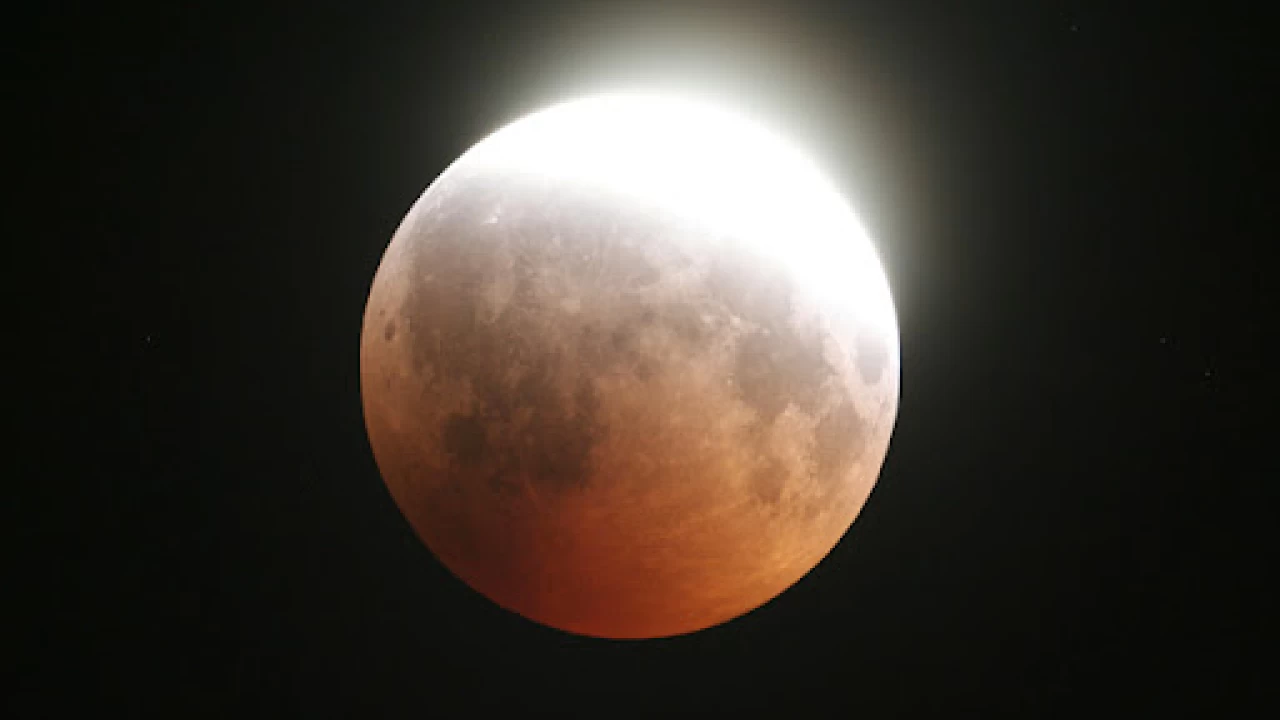Technology
Under a ‘blood moon’; world sights historic lunar eclipse
Those who can witness the moon are indeed lucky as it is the longest eclipse since 1440— offering stargazers a unique opportunity to observe a lunar eclipse.

The world is witnessing the historic and last lunar eclipse of 2021 on Friday (November 19). The last time such eclipse took place was in February 18, 1440, and the next longest partial umbral eclipse will not appear until February 8, 2669.
The lunar eclipse is visible from North and South America, Australia, and parts of Europe Asia, North and South America, Australia, and parts of Europe and Asia, much of Europe, much of Asia, Australia, North/West Africa, North America, South America, Pacific, Atlantic, Indian Ocean and Arctic.
The lunar eclipse will not be visible in Pakistan due to daylight.
A partial lunar eclipse occurs when Earth comes between the sun and a full moon but the three are not precisely aligned.
The eclipse remains from the moment the moon enters Earth’s penumbral shadow, to the moment it leaves.
The eclipse began at 11:02am and will end at 05:04pm.
Those who can witness the moon are indeed lucky as it is the longest eclipse since 1440— offering stargazers a unique opportunity to observe a lunar eclipse.
The overall duration of the today’s eclipse will be around 21,693 seconds (about 6 hours and 2 minutes) – this is an unusually long duration.
In 1,200 years, so far, there are 973 partial lunar eclipses and it is the longest partial umbral eclipse of this century.
Eclipses repeat with very small differences – in a 6,585-day cycle known as the Saros.
The Moon doesn't go completely dark in the same way the Sun is blotted out during a total solar eclipse. Instead, some sunlight bends through Earth's atmosphere, giving the Moon an eerie red glow.
This red color gives the phenomenon its nickname of a 'blood moon'.
The Starlight might look a little brighter tonight, thanks to a near-total lunar eclipse visible in all of North America, as well as parts of South America, Polynesia, Australia, and Asia. The eclipse will peak at 4:03 am ET/1:03 am PT. ✨❤️https://t.co/xfUPg8hTlv pic.twitter.com/fd0CvzmCxd
— NASA Earth (@NASAEarth) November 18, 2021
-

 Pakistan 1 day ago
Pakistan 1 day agoCM Punjab gives Rs2.5mn cheque to family of guy hit by her protocol convoy
-

 Business 2 days ago
Business 2 days agoGold price falls drastically by Rs7800 in Pakistan
-

 Pakistan 2 days ago
Pakistan 2 days agoImran Khan not ready for deal, will face all cases: Aleema
-

 Pakistan 2 days ago
Pakistan 2 days agoIranian President Raisi reaches Lahore
-

 Pakistan 1 day ago
Pakistan 1 day agoAfter President’s visit, Pakistan-Iran joint declaration issued
-

 Sports 1 day ago
Sports 1 day agoPak vs NZ: Muhammad Rizwan, Irfan Khan ruled out of T20I series
-

 Pakistan 1 day ago
Pakistan 1 day agoImran Khan nominates Hamid Raza as chairman PAC
-

 Pakistan 2 days ago
Pakistan 2 days agoDelay in tax cases: PM orders to suspend Chief Commissioner Inland Revenue





























